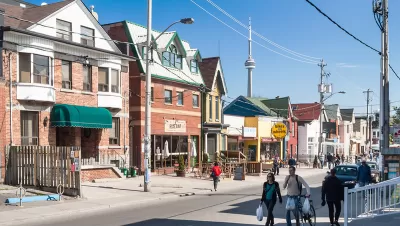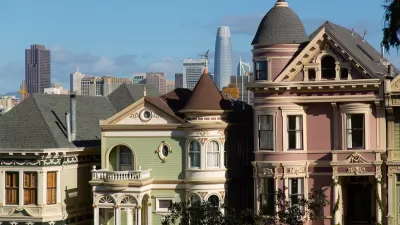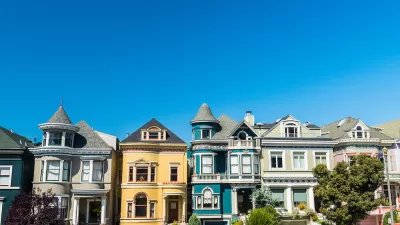An interview on the Congress for New Urbanism's Public Square examines the concept of incremental development—how it can benefit communities all over the country and how it improves on a century of large-scale development.

Robert Steuteville interviews John Anderson, principal of Anderson-Kim Architecture & Urban Design, and Eric Kronberg, principal of Kronberg Wall Architecture, about the virtues of incremental development and role of small developers in the building community.
The premise of the article, on the value of incremental development, is that "great places are built in small increments." On the other side of that coin is sprawl, which in the United States "grew hand-in-hand with the supersizing of the development industry." In the contemporary era, according to Steuteville, "Small urban developers can succeed by understanding that 'the project is the neighborhood'—and even a tiny development can build value and contribute to community. In doing so, small developers can be the craft beer to big developers' Budweiser."
The interview ranges from how incremental development benefits walkable urban places, how incremental development relates to New Urbanism, the craft beer industry as a model for development success, and the types of developments that fill the incremental needs of communities.
FULL STORY: Great idea: Incremental development

Planetizen Federal Action Tracker
A weekly monitor of how Trump’s orders and actions are impacting planners and planning in America.

Chicago’s Ghost Rails
Just beneath the surface of the modern city lie the remnants of its expansive early 20th-century streetcar system.

San Antonio and Austin are Fusing Into one Massive Megaregion
The region spanning the two central Texas cities is growing fast, posing challenges for local infrastructure and water supplies.

Since Zion's Shuttles Went Electric “The Smog is Gone”
Visitors to Zion National Park can enjoy the canyon via the nation’s first fully electric park shuttle system.

Trump Distributing DOT Safety Funds at 1/10 Rate of Biden
Funds for Safe Streets and other transportation safety and equity programs are being held up by administrative reviews and conflicts with the Trump administration’s priorities.

German Cities Subsidize Taxis for Women Amid Wave of Violence
Free or low-cost taxi rides can help women navigate cities more safely, but critics say the programs don't address the root causes of violence against women.
Urban Design for Planners 1: Software Tools
This six-course series explores essential urban design concepts using open source software and equips planners with the tools they need to participate fully in the urban design process.
Planning for Universal Design
Learn the tools for implementing Universal Design in planning regulations.
planning NEXT
Appalachian Highlands Housing Partners
Mpact (founded as Rail~Volution)
City of Camden Redevelopment Agency
City of Astoria
City of Portland
City of Laramie





























